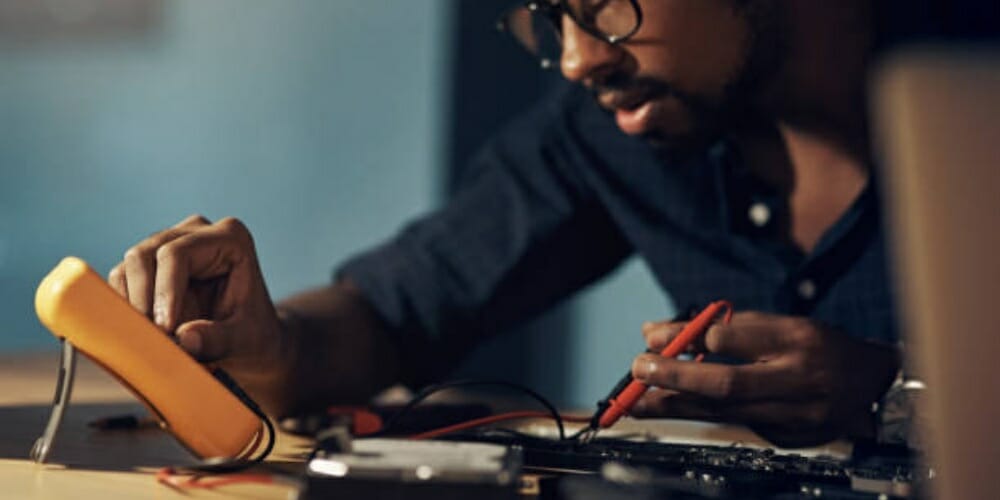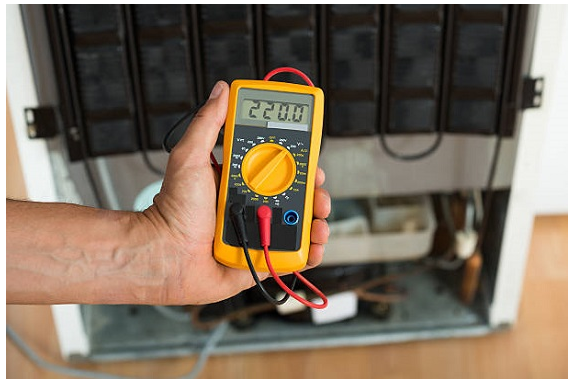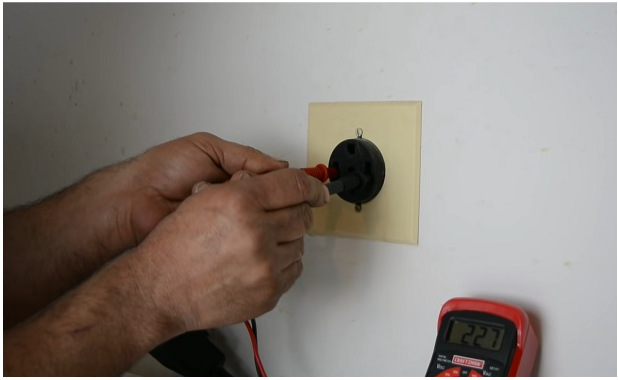Multimeter Setting for 220V Outlet Test (Guide)

Heavy-duty electrical devices such as refrigerators, dryers, and window unit air conditioners require a 220-volt electrical outlet. So, if your dryer, for example, is not drying your clothes, it’s most likely because it’s not receiving enough power supply. With that, you might wonder how you can pinpoint the exact problem with your equipment.
In general, you can use a digital multimeter to check voltage to determine whether you have a dead outlet or other electrical issues. First, switch its selector knob to the AC side, then set it to the closest known voltage setting, usually 220 to 240 VAC.
In this article, let me further discuss the appropriate multimeter setting and the steps for testing a 220v outlet.
The Multimeter Setting for Testing 220V Outlets

To set your digital multimeter to the correct setting, turn it on and turn the selector knob to the AC side to measure voltage. Then, select the closest known voltage setting to match what the outlet voltage should be. For example, a dryer outlet is usually 220 volts, so you’d choose 220 to 240 VAC.
5 Steps to Test a 220V Outlet with a Digital Multimeter (Bonus)
Here are the steps to successfully check the voltage of a 220v outlet using a multimeter:
Step 1: With the correct multimeter setting, connect the multimeter’s red and black leads to the red positive (+) and black negative (-) jacks, respectively. The jacks are usually color-coded to make it easy for users to identify and connect them correctly.
Step 2: Fill the two “hot” slots of the outlet with one test lead each. The two “hot” slots on a three-prong outlet are slanted, while the two “hot” slots on a four-prong outlet are the two outside vertical slots. Then, the multimeter reading should be between 220 and 240 volts.

Step 3: Put the red test lead in one of the “hot” slots and the black test lead in the “neutral” slot. The neutral prong will be L-shaped for the three- and four-prong outlets. Then, the voltage should be between 110 and 120 volts.
Step 4: Transfer the red test lead to the other “hot” slot while the black lead remains in the neutral slot. Then, the voltage should also be between 110 and 120 volts.
Step 5: Turn your multimeter to the “off” position and remove the red and black probes from the outlet. You can now connect the dryer cord to the dryer outlet for operation.
Important Things to Note
Now that you know the multimeter setting for 220v outlets and the steps for testing it, let’s move forward to the essential things you should consider in its process:
- Before you install any new appliances or electrical devices, make sure you first measure the voltage of the 220v outlet. If you plug something into that outlet without first making sure it works, you’re likely to damage it further as it might not receive a sufficient power supply.
- Take precautions. You must hold both red and black probes in one hand to avoid electrocution. Also, never let the metal pieces of your probes become attached, as this could result in a dangerous short circuit.
- Learn about the geography of your outlet. An outlet has three slots for each neutral, hot, and ground wire. The ground wire has a 1/2 circle, the neutral wire has a longer slot on the left, and the hot wire has a short slot on the right.
- Make sure you locate the circuit breaker for the 220v outlet in the primary circuit panel, usually in the utility room. Your circuit breaker is labeled on the panel’s door, and the 220v outlet is likely to be a maximum two-pole breaker.
- If the readings don’t match the required volts, don’t try to plug in your appliances because you’ll get electrocuted.
References
Website Resources:
